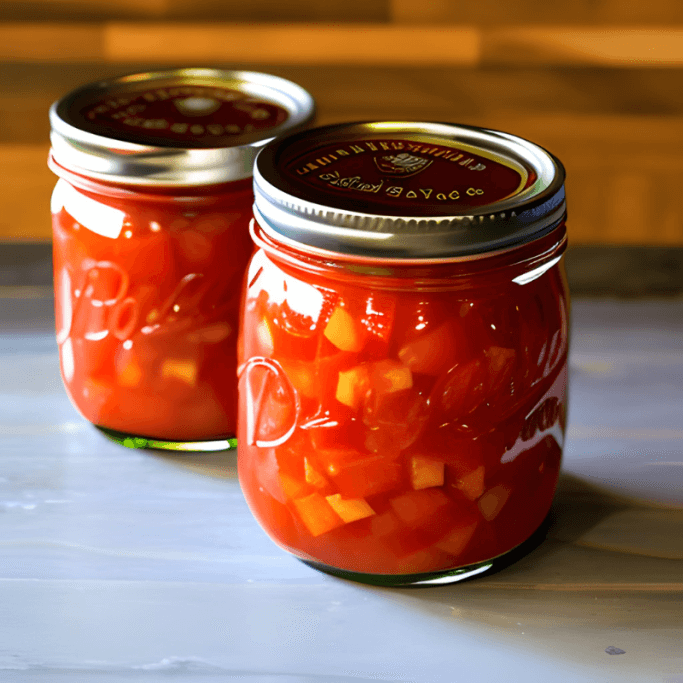The Best Books on Canning and Food Preserving
These are some of the very best books on canning and home food preservation. Here I go over the pros and cons of each book, and which ones are my favorite canning books.
Best Books on Canning and Food Preserving
One of the most valuable skills a homemaker can learn is that of home canning and food preservation.
Maybe you have a big garden and want to preserve your own fresh produce. Or you might like to buy bulk vegetables, fruits and meats and then preserve them.
Related: How We Cut Our Grocery Bill in Half
Either way, learning how to properly use home canners and do water bath canning and pressure canning the right way can be a little challenging.
Having a good book to guide you can be so helpful in figuring out the details and techniques!
That’s why I’ve put together this list of what I think are some of the very best books for someone new to canning or just wanting more guidance on home preserving.
Affiliate links included below, which means I may make a small commission at no extra cost to you. As an Amazon affiliate I earn from qualifying purchases. Read my disclosure here.
Ball Complete Book of Home Preserving
My top pick for the best book on canning and home preserving is the Ball Complete Book of Home Preserving.
The Ball name (makers of Ball canning products) is almost synonymous with home canning, and for good reason!
Ball canning jars have been around since 1884. They are well known for some of the highest quality canning products.
Ball canning and preserving books have been published for decades, with new editions regularly coming out.
The most recent version of the Ball Complete Book of Home Preserving has over a million copies in print. It’s been thoroughly updated with new information not found in the earlier much-loved classics.
RECOMMENDED CANNING BOOK
SEE IT ON AMAZON*Over 1,000,000 copies in print
This book contains almost 450 pages of all kinds of canning recipes.
With some of the best recipes for everything from spreads and fruits to pickles and tomatoes, there’s a lot of variety in this comprehensive guide!
I have the paperback edition, although some people prefer the spiral-bound form for ease of use.
Although some of the recipes may seem a little exotic (I’ll probably never make wine jelly), there is a good range and variety of recipes.
I am a visual person so I would have appreciated more pictures. It also seems a little strange to put the chapter on food preservation at the end of the book rather than the beginning.
But on the plus side, there is information on how altitude affects home canning, There are also handy charts with a “problem solver” to help troubleshoot issues you may experience.
Overall, I highly recommend the Ball Complete Book of Home Preserving. It’s one of the best-selling canning books, and for good reason!
The All New Ball Book of Canning and Preserving and Ball Blue Book Guide to Preserving are also recommended for those new to canning, although I don’t personally own those titles.
More Posts About Stocking the Pantry
- Pantry Staples to Always Keep on Hand
- How to Make Flour With a Grain Mill
- Azure Standard for Beginners
- Homemade Ranch Dressing Mix
- Taco Seasoning Mix Recipe (Large Batch)
- Homemade Vanilla Extract
- How to Start a Garden for Beginners
- How to Build a Raised Bed Garden
The Homestead Canning Cookbook

Georgia’s guide is one of the better guides for those new to canning and home-canned goods.
She goes through all the steps a beginner would need to take to get started. The straightforward instructions are clear and precise.
This guidebook covers how to use both a water bath canner and a pressure canner. (This is the pressure canner I have.)
However, the “complete guide” chapters on water bath and pressure canning are only 3 to 4 pages, and could be a bit more comprehensive.
While not necessarily a complete guide like the Ball Book, it still contains all of the basics (and a few advanced methods) that would be very helpful for today’s home cooks.
I like the layout of this book, and want to try some of the new dishes she includes. It also has some nice color photographs.
Just a few of the topics covered are “Butters, Jams and Jellies,” Pickles, Sauerkraut, and Other Fermented Food,” and “Fruit and Pie Filling.”
Particularly helpful is how she covers water bath canning with simple, safe instructions. There are some simple recipes for things like fruit butter as well as some more advanced recipes for soups and stews.
I would definitely recommend The Homestead Canning Cookbook as one of the best canning books and a great first book for anyone starting out with canning.
Beginner’s Guide to Canning

As the book title suggests, this is more of an introduction than a comprehensive guide.
If you are among the new generation of home cooks looking to get started with things like canning jam and bread and butter pickles, this simple book could help you.
Diane covers some similar topics as other canning guides. But she also has a fun chapter on giftable treats.
If you enjoy the idea of homemade gifts, then this gift-giving chapter will inspire you!
With creative recipes like “Cinnamon Apple Rings” and “Raspberry-Chocolate Ice Cream Topping,” you’ll have fun canning with gift-giving in mind.
One thing I really like about this book is that each recipe is identified at the top as “pressure can” or “water bath.” This is helpful to quickly see what type of canning you’ll be doing.
While this guide is informative, it would be helpful to have more photos, particularly step-by-step photos. There are just a few photographs scattered throughout the book.
Although this book has less recipes and is not as comprehensive as some others, the step-by-step instructions are very helpful.
Beginner’s Guide to Canning is a worthwhile title to add to your canning kitchen library, and earns a spot on my list of best canning cookbooks.
Can It and Ferment It

This book is unique among canning and preserving recipe books in that the recipes can either be canned or fermented.
I’m trying to incorporate more fermented foods into my diet due to the many health benefits of probiotics.
Our ancestors often didn’t have access to canning supplies, although they often had root cellars. For situations where traditional canning isn’t an option, fermentation can be a wonderful way to preserve farmer’s market finds or a fresh vegetable garden bounty.
Fermenting in small batches also brings out new and fresh flavors from the ingredients.
Related: Refrigerator Pickles Recipe with Garlic and Dill
While I haven’t tried many of the recipes, there are some delicious dishes in here!
Pumpkin butter, pickled green beans, and quick curtido are all recipes I would like to try. There’s even a recipe for dandelion jelly!
This guide has quite a few full-color photos, which is a plus.
My only complaint (if I had one) is that it would be helpful to have more than 75 recipes. Also, the text is a little on the small side and the steps could have been laid out in an easier-to-use format.
Overall, Can It & Ferment It is an excellent modern handbook for anyone looking to preserve food without a pressure cooker.
Getting Started With Home Canning
If you’ve been thinking about getting started with canning, then these guides are a great way to find out what’s involved.
Whether you prefer water-bath canning, pressure canning, fermentation, or a combination of techniques, food preservation is a great skill to learn.
Wherever you are on your journey towards frugality, homesteading, or simple living, these books can guide you and help you preserve the bounty.


